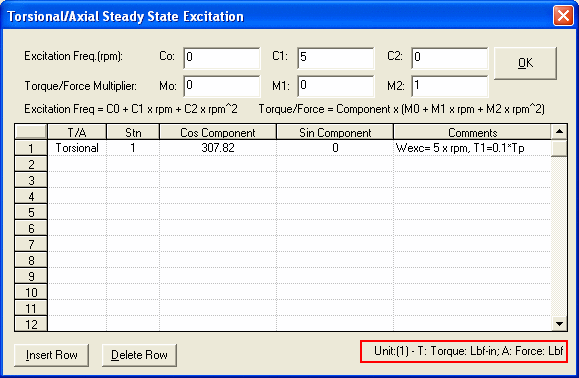
Torsional/Axial Steady State Excitations
This option allows you to input the torsional and/or axial steady state excitations. For torsional vibration, the excitation is torque. For axial vibration, the excitation is force. The excitation frequency can be a second order polynomial function of rotor speed, although the multiple (or fraction) of the rotor speed is the most common in the rotating machinery. By adjusting the frequency coefficients, the excitation frequency can be a constant, synchronous, or non-synchronous excitation. The torque/force multiplier provides the flexibility of including the frequency into the torque/force amplitude. By adjusting the multiplier coefficients, the excitation amplitude can be a constant, first order, or second order of the frequency (speed).

1. T/A Option: Torsional or Axial vibration.
2. Stn I: Station number where the excitation is applied.
3. Cos Component: Tc, Cosine component of the excitation amplitude.
4. Sin Component: Ts, Sine component of the excitation amplitude.
5. Comment: Description.
For a single excitation, there is no phase difference between the excitations. The sine component of the excitation (Ts) can be set to zero and only use the cosine component (Tc) for the excitation amplitude.

See other Torsional/Axial Data Torsional/Axial Data.
Copyright © 2014-2017